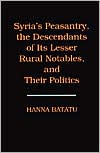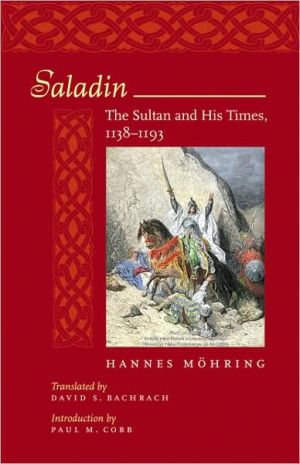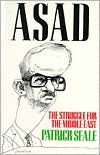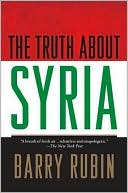Syria's Peasantry, the Descendants of Its Lesser Rural Notables, and Their Politics
In this book, the distinguished scholar Hanna Batatu presents a comprehensive analysis of the recent social, economic, and political evolution of Syria's peasantry, the segment of society from which the current holders of political power stem. Batatu focuses mainly on the twentieth century and, in particular, on the Bàth movement, the structures of power after the military coup d'état of 1963, and the era of îvfiz al-Asad, Syria's first ruler of peasant extraction. Without seeking to prove...
Search in google:
"This is a richly textured study. . . . The book is full of interesting and novel ways of understanding Syrian peasant behavior and why peasants cannot be discussed as a single socioeconomic or political force or group."--Philip S. Khoury, Massachusetts Institute of Technology"This is a profound and comprehensive study of modern Syria that is unlikely to be surpassed for a very long time. It is a model of how social history should be written, and of how it can be used to explain the politics of a complex society like Syria."--Rashid Khalidi, University of Chicago Choice Batatu's thoroughly researched, objective study provides a sociological and anthropological approach to contemporary Syrian politics and is an excellent source of information on various and often conflicting components of Syrian society.
COPYRIGHT NOTICE: Published by Princeton University Press and copyrighted, © 1999, by Princeton University Press. All rights reserved. No part of this book may be reproduced in any form by any electronic or mechanical means (including photocopying, recording, or information storage and retrieval) without permission in writing from the publisher, except for reading and browsing via the World Wide Web. Users are not permitted to mount this file on any network servers.\ Chapter 1: The Role of Demographics \ BETWEEN THE END of the First World War and the present time marked increases in population occurred in Syria. Although the relevant statistical evidence may be somewhat defective, in particular with regard to the first four decades of this century, the persistence of demographic growth is unmistakable. Syria's population rose from about 1.5 million1 in 1922 to about 13.8 million in 1994 (consult Table 1-1), that is, more than ninefold. Its average annual growth rate was 3.3 percent in the period 1970-1991.2\ Table 1-1\ Syria's Total and Rural Population and Its Population Active in Agriculture,\ Animal Husbandry, and Forestry (in thousands)\ \ \ \ Year\ \ \ Total\ Population\ \ \ Rural\ Population\ \ % of\ Rural\ Population\ \ \ Population Active\ in Agriculture,\ Animal Husbandry,\ and Forestry\ \ \ % of Total\ Economically\ Active Population\ \ \ \ \ 1922a\ \ \ 1,547\ \ \ n.a.b\ \ \ \ n.a.b\ \ \ n.a.b\ \ \ \ \ 1937a\ \ \ 2,367\ \ \ n.a.b\ \ \ \ n.a.b\ \ \ n.a.b\ \ \ \ \ 1946a\ \ \ 2,950\ \ \ 2,006\ \ \ 68.0\ \ \ 683\ \ \ n.a.b\ \ \ \ \ 1960(census)\ \ \ 4,353cd\ \ \ 2,668cd\ \ \ 61.3\ \ \ 514cd\ \ \ 52.1cd\ \ \ \ \ 1970(census)\ \ \ 6,305c\ \ \ 3,564c\ \ \ 56.5\ \ \ 747c\ \ \ 49.4c\ \ \ \ \ 1981(census)\ \ \ 9,046\ \ \ 4,790\ \ \ 52.9\ \ \ 495\ \ \ 24.2\ \ \ \ \ 1991a\ \ \ 12,529\ \ \ 6,194\ \ \ 49.4\ \ \ 924\ \ \ 28.0\ \ \ \ \ 1994(census)\ \ \ 13,782\ \ \ 6,732a\ \ \ 48.6a\ \ \ n.a.b\ \ \ n.a.b\ \ \ \ \ \ Sources: League of Nations, The Mandates System (Geneva, 1945), pp. 86-87; Great Britain, Foreign Office, FO 371/75558, XL/A/11723, E4976, Annex B to Letter of 22 October 1948 from H. R. Stewart; Office Arabe de Presse et de Documentation, Damascus, Recueil des statistiques syriennes compar‚es (1928-1968), p. 10; Syria, Ministry of Planning, Directorate of Statistics, Census of Population, 1960 . . . , pp. 30-31, 34-35, and 162-63; Syria, Office of Prime Minister, Central Bureau of Statistics, Population Census in Syrian Arab Republic, 1970, vol. 1, pp. 1, 39, and 306; Results of the Population Census . . . , 1981 (in Arabic), pp. 44 and 225; and Statistical Abstracts, 1991, p. 60; 1992, pp. 90-91; 1994, pp. 62 and 80-81; and 1996, p. 58.\ aEstimates.\ bNot available.\ cThe 1960 and 1970 census takers did not count a great number of women working on family farms.\ dThis figure does not take into account the bedouin elements, who numbered 211,670 in 1960.\ \ This growth of population had its beginnings in the nineteenth century and was worldwide in its incidence. As Fernand Braudel has pointed out, its rhythm—registering, despite slowdowns, a continuous rise—differs from that of former times, which was characterized by alternate demographic ebbs and flows.3\ In Syria the phenomenon was initially related to the revival of agriculture and its gradual or fitful integration into the world trade network. But the rise in population was as much an effect as a cause of the agricultural revival, in the sense that the two phenomena nurtured and reinforced each other. Other factors contributed sooner or later to the advance of agriculture, including the increase in rural security, the growing penetration into the countryside of money and the idea of profit, the stabilization of property rights, the settlement of the bedouins, the introduction of machinery and artificial fertilizers, and the building of roads, railways, harbors, and irrigation works.\ If, initially, the rise in population was related to the reanimation of agriculture, its continued growth has been increasingly a reflection of the decline in mortality rates, particularly after World War II. The process is traceable to the restriction of the ravages of endemic diseases, greater access to purified water, better sanitation, increasing public health facilities, improved diets and child health care, and wider utilization of antibiotics. As is clear from Table 1-2, the crude death rate for Syria fell by two-thirds between 1960 and 1991, and in the latter year was, interestingly enough, lower than that for Japan or the United States, assuming the accuracy of the demographic indicators. As is reflected in the same table, Syria appears also to have made much progress between 1960 and 1991 in lengthening life expectancy and reducing infant mortality. This could perhaps be attributed, at least in part, to the marked interest of its regime in the welfare of country people, which is, in turn, explicable by the regime's rural roots and rural constituency. As regards the infant mortality rate, however, it is doubtful that the rural-urban differential has as yet been wiped out; but rural people aged fifty and above appear to live longer than their urban counterparts.4\ Table 1-2\ Life Expectancy and Demographic Indicators, Syria Compared with Selected Middle Eastern and Advanced Countries\ \ \ \ \ Crude Birth Rate per\ Thousand Population\ \ \ Crude Death Rate per\ Thousand Population\ \ \ Life Expectancy at Birth\ (Years)\ \ \ Infant Mortality Rate per\ Thousand (Aged 0-1)\ \ \ \ \ Country\ \ \ 1960\ \ \ 1984\ \ \ 1991\ \ \ 1960\ \ \ 1984\ \ \ 1991\ \ \ 1960\ \ \ 1986\ \ \ 1991\ \ \ 1960\ \ \ 1984\ \ \ 1991\ \ \ \ \ Syria\ \ \ 47\ \ \ 45\ \ \ 44\ \ \ 18\ \ \ 8\ \ \ 6\ \ \ 50\ \ \ 64\ \ \ 67\ \ \ 132\ \ \ 55\ \ \ 37\ \ \ \ \ Saudi Arabia\ \ \ 49\ \ \ 43\ \ \ 37\ \ \ 23\ \ \ 9\ \ \ 5\ \ \ 43\ \ \ 63\ \ \ 69\ \ \ 185\ \ \ 61\ \ \ 32\ \ \ \ \ Egypt\ \ \ 44\ \ \ 36\ \ \ 32\ \ \ 19\ \ \ 10\ \ \ 9\ \ \ 46\ \ \ 61\ \ \ 61\ \ \ 128\ \ \ 94\ \ \ 59\ \ \ \ \ Iraq\ \ \ 49\ \ \ 45\ \ \ \ 20\ \ \ 10\ \ \ \ 46\ \ \ 63\ \ \ \ 139\ \ \ 74\ \ \ \ \ Iran\ \ \ 46\ \ \ 41\ \ \ 44\ \ \ 20\ \ \ 9\ \ \ 9\ \ \ 50\ \ \ 59\ \ \ 65\ \ \ 163\ \ \ 112\ \ \ 68\ \ \ \ \ Jordan\ \ \ 47\ \ \ 46\ \ \ 37\ \ \ 20\ \ \ 8\ \ \ 5\ \ \ 47\ \ \ 65\ \ \ 69\ \ \ 136\ \ \ 50\ \ \ 29\ \ \ \ \ Israel\ \ \ 27\ \ \ 23\ \ \ 21\ \ \ 6\ \ \ 7\ \ \ 6\ \ \ 69\ \ \ 75\ \ \ 76\ \ \ 32\ \ \ 14\ \ \ 9\ \ \ \ \ Turkey\ \ \ 43\ \ \ 30\ \ \ 28\ \ \ 16\ \ \ 9\ \ \ 7\ \ \ 51\ \ \ 65\ \ \ 67\ \ \ 190\ \ \ 86\ \ \ 58\ \ \ \ \ Japan\ \ \ 18\ \ \ 13\ \ \ 10\ \ \ 8\ \ \ 7\ \ \ 7\ \ \ 68\ \ \ 78\ \ \ 79\ \ 31\ \ 6\ \ \ 5\ \ \ \ \ U.S.A.\ \ \ 24\ \ \ 16\ \ \ 16\ \ \ 9\ \ \ 9\ \ \ 9\ \ \ 70\ \ \ 75\ \ \ 76\ \ \ 26\ \ \ 11\ \ \ 9\ \ \ \ \ \ Sources: The World Bank, World Development Reports (Washington, D.C.) 1982, pp. 144-45 and 150-51; 1986, pp. 230-33; 1988, pp. 222-23; and 1993, pp. 238-39 and 290-93.\ \ Although under ideal circumstances Syria can absorb a larger workforce in its economy, rapid demographic growth has been, at one point or another in the last four decades, an important unsettling factor in Syrian life. In conjunction with other elements, such as recurring droughts and soil degradation, it has increased the pressure on land, stimulated an unprecedented rural exodus, made Damascus and other main cities top-heavy with people and problems, pushed up the cost of food, exacerbated economic inequalities, and indirectly contributed to the rise of the Ba'thists and, eventually, to the partial erosion of the salutary effects of agrarian reform. Conjointly with inadequate productivity, the improvement from the 1950s onward of living standards and the consequent rise in per capita consumption, demographic growth was also responsible for transforming Syria in the 1970s from a net exporter into a net importer of food, thus significantly increasing the country's financial burden.\ Between 1976 and 1989, however, there appears to have been a simultaneous decrease in Syria's agricultural population (see Table 1-3). True, the official figures should be viewed with some skepticism. The sharp fluctuations in the size of the farming force that they reflect stem in part from the vagaries of the weather, but may also be due to flaws or changes in sampling methods. The figure for 1976 is probably to some extent a statistical aberration. The projections for the years preceding or succeeding the 1981 census, which was published in 1988, may be defective. Nevertheless, the decline of the cultivating population in that period was in all likelihood fairly large. Moreover, there are indications that at least some of the owners of small or nonviable farms are now only part-time husbandmen, having been driven by economic need to take second jobs in nearby towns.\ Table 1-3\ Proportion of Population Employed in Agriculture\ in 1970-1984, 1989, and 1991\ \ \ \ Year\ \ \ Population Active in\ Agriculture, Animal Husbandry\ and Forestry in Thousandsa\ \ \ % of Total\ Economically Active\ Population\ \ \ \ \ 1970 (census)\ \ \ 747b\ \ \ 49.4\ \ \ \ \ 1971\ \ \ 892\ \ \ 54.2\ \ \ \ \ 1972\ \ \ 908\ \ \ 55.6\ \ \ \ \ 1973\ \ \ 858\ \ \ 50.8\ \ \ \ \ 1974\ \ \ 864\ \ \ 53.0\ \ \ \ \ 1975\ \ \ 918\ \ \ 49.9\ \ \ \ \ 1976\ \ \ 578c\ \ \ 33.7\ \ \ \ \ 1977\ \ \ 756\ \ \ 39.9\ \ \ \ \ 1978\ \ \ 671\ \ \ 34.7\ \ \ \ \ 1979\ \ \ 687\ \ \ 32.8\ \ \ \ \ 1980\ \ \ 687\ \ \ 32.3\ \ \ \ \ 1981(census)\ \ \ 495c\ \ \ 24.2\ \ \ \ \ 1982\ \ \ 705\ \ \ 32.0\ \ \ \ \ 1983\ \ \ 715\ \ \ 31.8\ \ \ \ \ 1984\ \ \ 571d\ \ \ 31.7\ \ \ \ \ 1989\ \ \ 675\ \ \ 22.9\ \ \ \ \ 1991\ \ \ 924\ \ \ 28.0\ \ \ \ \ \ Sources: Syria, Office of Prime Minister, Central Bureau of Statistics, Population Census . . . , 1970, vol. I, p. 306; Results of the Population Census, 1981, p. 225; Yearly Compilation of Agricultural Statistics (in Arabic) and Statistical Abstracts for various years; and the Peasants' General Union, al-Mu' tamar-ul-'Am ar-Rabi', p. 28; al-Mu' tamar-ul- 'Am al-Khamis, p. 71; and al-Mu'tamar-ul-'Am as-sadis, p. 53. The latter congress gave the figure 696,200 for the 1981 population active in agriculture but I relied on the figure in the 1981 census, which was published in 1988.\ Note: The Syrian government did not publish figures for 1985-1988 and 1990.\ aThe short-run (year-to-year) variation in the agricultural labor force is largely explicable by the vagaries of the weather, but transfer to other occupations and internal and external migration were also involved.\ bAn undercount of female family workers is certain.\ cIt is not clear why the agricultural population dropped so sharply in 1976 and 1981. The indices of total agricultural production for these two years inclined upward (see Table 4-3). It is possible that the 1976 figure is a statistical aberration or that the statistical projections for the earlier or succeeding years are defective. The latter explanation might be true also of the figures for the years preceding or following 1981.\ dBecause of a drought Syrian agriculture was depressed in 1984.\ \ The decrease in the farming population in the years in question had its roots in the income differentials between rural and urban laborers, the attractions of city life, the irregularity of rainfall, the depletion from over-use of the subterranean water in some areas, the greater reliance on agricultural machines and on a capital-intensive mode of production, and the sharp swing in the world grain prices. In the second half of the 1970s many peasants in such rainfed regions as the Hawran and Jabal Druze were also tempted to seek their fortunes in the Gulf, but the prospects for these migrant laborers have dwindled with the downward movement of international oil prices after 1981 and in particular after the 1985 precipitous oil price plunge. This factor, added to the relative improvement in the conditions of life in the countryside and the decreasing chances for peasant employment in the cities, may account for what the Peasants' General Union described as "a reverse migration" from urban areas to the villages in the early 1990s,5 which is reflected in the increase of the agricultural force from about 675,107 in 19896 to about 924,274 in 1991.7 But 1991 was also a year of exceptional rainfall.8\ One other significant demographic feature is the population's low rate of participation in the labor force, which stood in 1970 at 24.9, in 1981 at 22.7 and in 1991 at 27.8 percent.9 It is possible that a segment of the unpaid women working on family farms were not officially enumerated. But the low labor participation rate is in large measure explicable by the youthful slant of the population's age structure: in 1994—the latest year for which relevant data are available—44.8 percent of the Syrians were younger than fifteen.10 Moreover, a high proportion of urban women do not take part in the work force. Both these factors add greatly to the economic burden of the laboring component of the population.
List of TablesPrefacePt. IThe Peasants' Socioeconomic Conditions3Ch. 1The Role of Demographics5Ch. 2Differentiations10Ch. 3Living Conditions38Ch. 4Economic Efficiency75Pt. IIThe Pre-Bath Patterns of Peasant Consciousness, Organization, and Political Behavior93Ch. 5Introduction: Portraits of Peasants by Ibn Khaldun, Balzac, Trotsky, Father Ayrout, and J. C. Scott, and Their Relevance95Ch. 6The First Peasant Organizations or the Corporations of Peasant-gardeners from the Seventeenth to the Twentieth Century98Ch. 7Sufism among the Peasants: A Source of Political Quietism?103Ch. 8The Proneness in Ottoman and Mandate Times of the Peasant Mountaineers to Rebellion and of the Peasants of the Open Plains to Indirect Methods of Defense109Ch. 9The Communists and the Peasants118Ch. 10The Arab Socialists, or the First Agrarian Party in Syria's History124Pt. IIIThe Rural and Peasant Aspects of Ba'thism131Ch. 11The Old Ba'th and the Political Rearing of a Rural Intelligentsia133Ch. 12The "Transitional" Ba'th or the Ba'th of the 1960s, the Rise of the Lesser Rural or Village Notability, and the Ruralization of the Army, the Party, and, to Some Degree, the State Bureaucracy144Ch. 13The Post-1970 Asad-molded, Career-oriented Ba'th176Pt. IVHafiz Al-Asad, or Syria's First Ruler of Peasant Extraction191Ch. 14Asad's Background, Early Education, Party Apprenticeship, and First Political Battle193Ch. 15Asad's Military Career and Military Qualifications, or the Inferences as to His Generalship Deducible from His Performance in the 1967 and 1973 Wars and during Israel's Invasion of Lebanon198Ch. 16The Varied Aspects of Power in Asad's State204Ch. 17Focusing for a While on the More Subtle Forms of Power208Ch. 18The Organization of Power at the Second Tier of Asad's Polity and Its Partaking, among Other Features, of a Basic Trait of Peasant Life217Ch. 19A Glance at the Third Level of Power or at the Composition of the Upper Elite of the Ba'th Party (1970-1997)244Ch. 20Shifting the Focus to the Fourth Level of Power, or an Analysis, by Way of Illustration, of the Role of the Peasants' General Union, the Party's Principal Ancillary Mass Organization251Ch. 21A Closer View of the Summit of Power, or Asad's Personality as a Factor in the Maintenance of His Rule and the Thwarting of His Opponents256Ch. 22Of the Manner in Which Asad Dealt with the Muslim Brethren and their Militants, and the Light It Throws on the Methods by Which He Holds Sway260Ch. 23Asad's Main Concepts at the Level of Regional Politics: Ends or Instruments?279Ch. 24An In-depth Study of Asad's Relations with Fath and the P.L.O. from 1966 to 1997 and the Light It Sheds on His Aims and Techniques287Ch. 25Epilogue323AppMembers of the Syrian Ba'th Party (Regional) Commands, 1963-1997331Notes355Select Bibliography391Index I: Subjects405Index II: Personal Names409Index III: Names of Families and Tribes414
\ ChoiceBatatu's thoroughly researched, objective study provides a sociological and anthropological approach to contemporary Syrian politics and is an excellent source of information on various and often conflicting components of Syrian society.\ \ \ \ \ BooknewsArguing that Syria's current ruling group, the Ba`thists, are primarily constituted by a variety of rural interests and populations, Batatu (Arab studies, Georgetown U.) explores the demographics and ideologies of Syria's peasantry, how they came to make up the grouping that became the Ba`thists, how the interests of different rural groups came to be represented in government in the personage of President Hafiz al-Asad. Annotation c. Book News, Inc., Portland, OR (booknews.com)\ \








